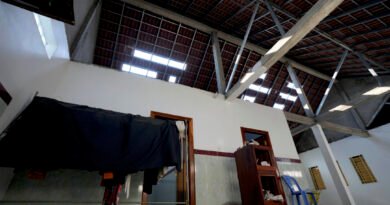The Philippine Military to Hold Exercises for Seizing Islands in South China Sea
The Philippine army, navy, and air force commenced a two-week period of joint force exercises in the South China Sea on Nov. 4, including island-seizing drills, as confirmed by military officials.
“Our mission today is crystal clear, to adequately prepare ourselves to respond to any external threats that may challenge our sovereignty,” stated Armed Forces of the Philippines chief Gen. Romeo Brawner Jr. during the inauguration of the exercises.
Although Philippine military officials assert that the drills are not aimed at any specific country, Beijing has consistently accused Manila and its allies of causing disruptions in the area when conducting drills and patrols in the highly disputed South China Sea.
The Chinese communist regime claims nearly all of the waters as its own, in violation of international law, leading to numerous clashes with foreign vessels, including those of the Philippine coast guard.
Philippine Army Col. Michael Logico informed reporters during the ceremony that Chinese surveillance is anticipated during the exercises.
“They have a front-row seat to the exercise. They’ll observe, and we have no objections,” Logico mentioned.
The exercise will feature live-fire artillery and assault rifle drills, along with beach landing exercises. Details on island-seizing drills were not provided.
Throughout this year, the Chinese military has escalated its presence and engagements in the South China Sea, even encroaching on undisputed foreign territory.
Incidents have transpired in the Sabina Shoal and Second Thomas Shoal. The Philippines maintains that these locations fall within its 200 nautical mile exclusive economic zone, as acknowledged by international law. However, the Chinese regime lays claim to these regions.
The United States and its partners have also bolstered joint exercises in the Indo-Pacific, expressing apprehension over Chinese military activities in the region.
“We continue to be troubled by China’s increasingly risky and unlawful actions in the South and East China Seas, which have caused harm to individuals and vessels from ASEAN nations and contradict pledges to peacefully resolve conflicts,” Blinken articulated at the 12th Southeast Asian Nations (ASEAN)–U.S. Summit.
The Associated Press contributed to this report.





